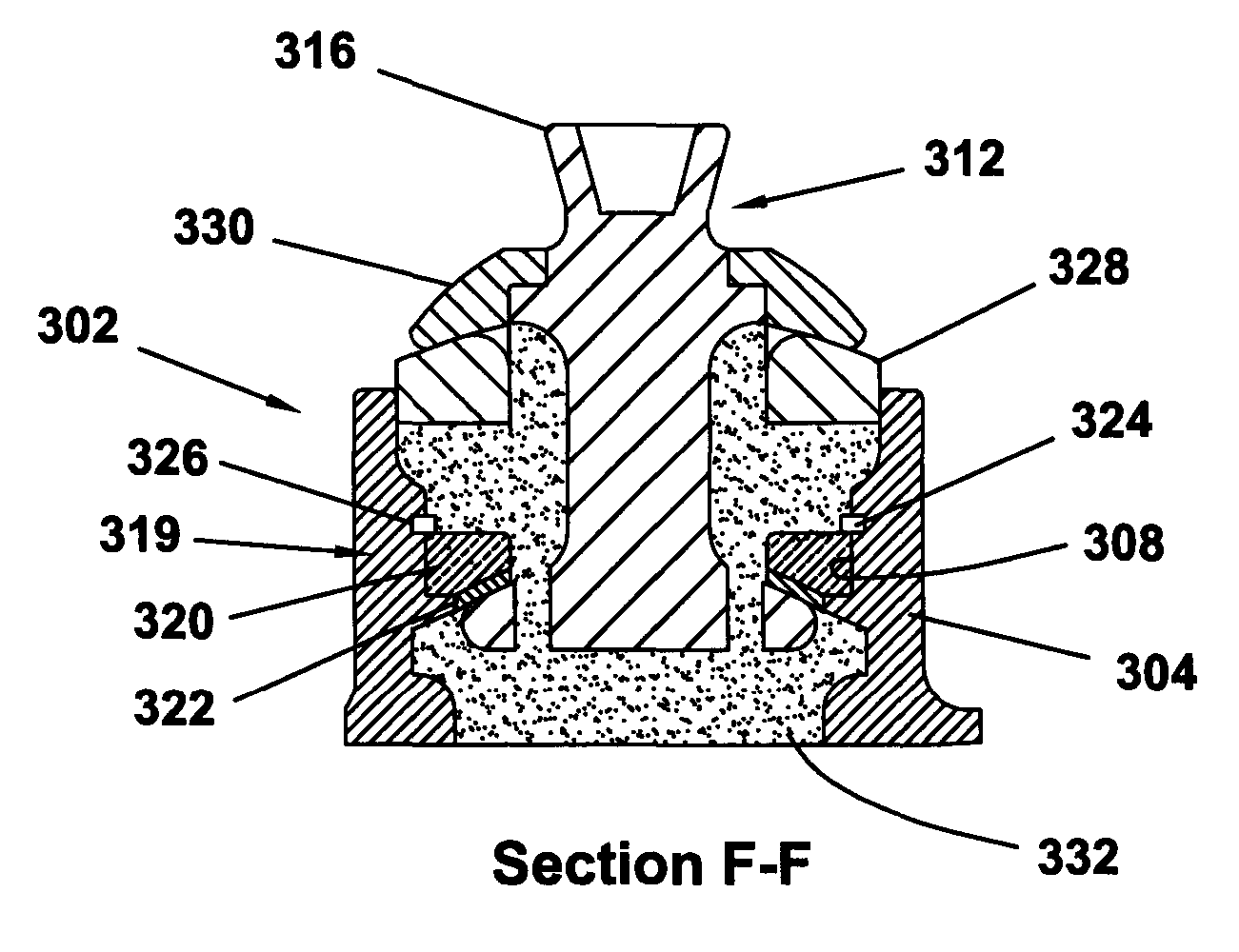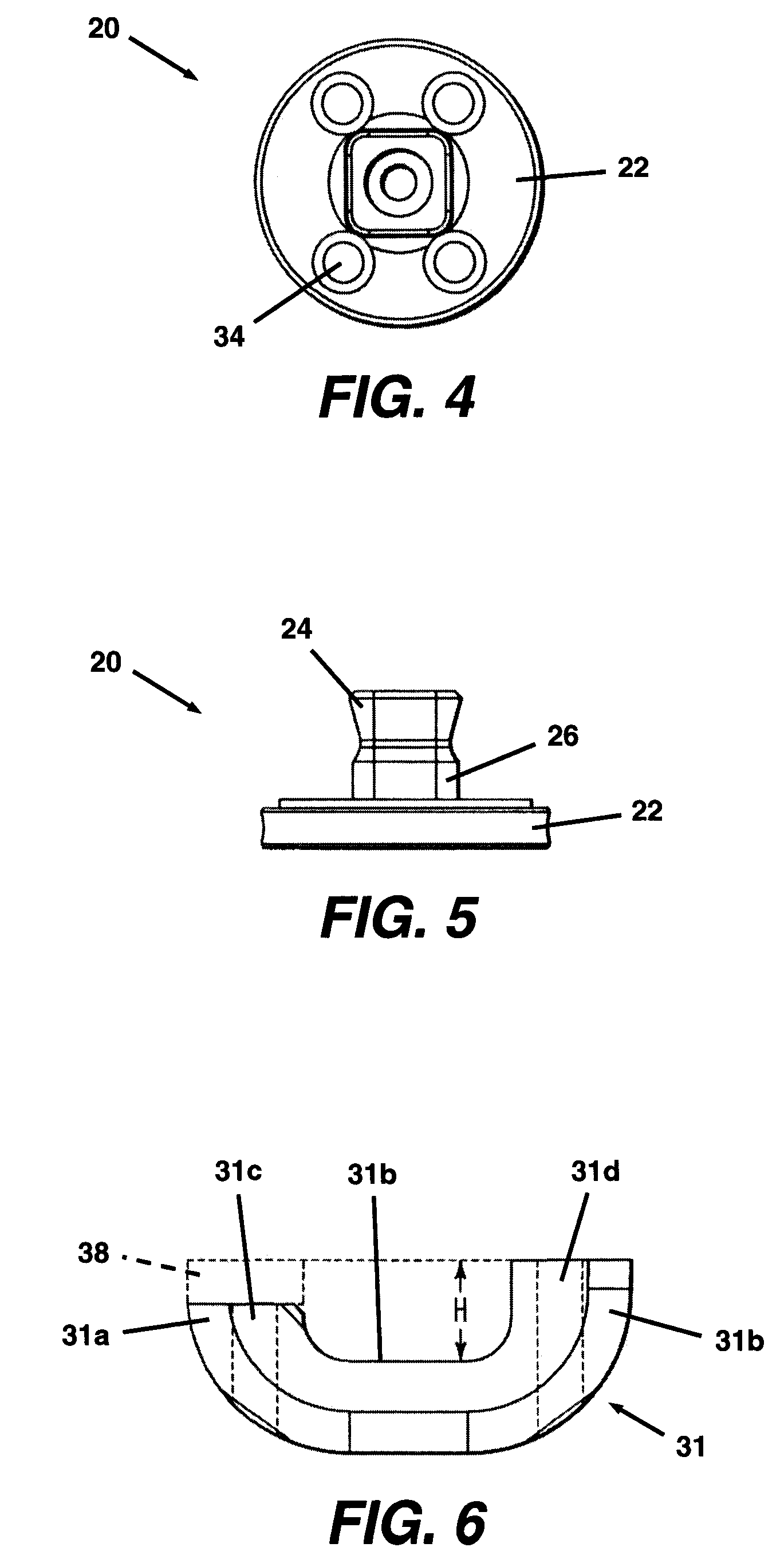Multi-axis prosthetic ankle
a prosthetic ankle and multi-axis technology, applied in the field of prosthetic devices, can solve the problems of choppy, unnatural and uncomfortable gait, and inability to optimally control multi-axis motion of most prosthetic ankles currently on the market, and achieve the effects of limiting the range of motion of the ankle, enhancing the movement of the lower leg connection component, and limiting the movement of the ankl
- Summary
- Abstract
- Description
- Claims
- Application Information
AI Technical Summary
Benefits of technology
Problems solved by technology
Method used
Image
Examples
Embodiment Construction
)
[0067] A first exemplary embodiment of a multi-axis prosthetic ankle according to the present invention can be observed by reference to FIGS. 1-9. As can be seen, particularly with respect to FIGS. 2-3, for clarity of illustration the elastomeric casing is shown in phantom lines, thereby revealing the encased components of the mechanical device (rigid mechanical means). In this particular embodiment, the main components of the multi-axis prosthetic ankle 5 are the bottom component 10, the lower leg connection component 20, the mechanical device 30 (rigid mechanical means), and the elastomeric casing 40, which is bonded to the bottom component and the lower leg connection component and floatingly encases the elements of the mechanical device.
[0068] Referring more particularly to FIGS. 7 and 8, the bottom component 10 comprises a generally circular disk like base 12, and a first “U” shaped bracket 14 (first rigid element) projecting perpendicularly upwardly from the base. The first ...
PUM
 Login to View More
Login to View More Abstract
Description
Claims
Application Information
 Login to View More
Login to View More - R&D
- Intellectual Property
- Life Sciences
- Materials
- Tech Scout
- Unparalleled Data Quality
- Higher Quality Content
- 60% Fewer Hallucinations
Browse by: Latest US Patents, China's latest patents, Technical Efficacy Thesaurus, Application Domain, Technology Topic, Popular Technical Reports.
© 2025 PatSnap. All rights reserved.Legal|Privacy policy|Modern Slavery Act Transparency Statement|Sitemap|About US| Contact US: help@patsnap.com



